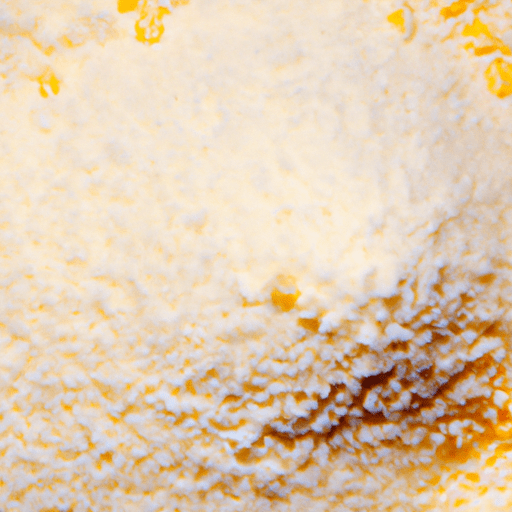Yellow Corn Flour: A Versatile and Nutritious Ingredient
In the world of culinary delights, there are a plethora of ingredients that add a burst of flavor and bring a unique touch to dishes. One such ingredient is yellow corn flour, which has earned a well-deserved reputation as a staple in many cuisines. With its distinctive taste, versatility, and rich nutritional value, yellow corn flour has become a favorite among home cooks and professional chefs alike.
Taste and Texture
Yellow corn flour possesses a distinct and slightly sweet flavor that adds depth to both savory and sweet dishes. It offers a delicate corn aroma that can transport you to a summery evening in a field of golden cornstalks. When used in baked goods, yellow corn flour imparts a subtle crunch and a pleasant nutty undertone. Combined with other ingredients, it creates a delightful blend of flavors that is hard to resist.
Common Uses in Cooking
Yellow corn flour can be used in a multitude of recipes, spanning from traditional to modern cuisines. One of its most popular uses is as a primary ingredient in making cornbread, those golden-hued delights that are a classic American comfort food. Cornbread made with yellow corn flour is wonderfully moist with a crumbly texture, complementing spicy stews, chili, or simply served as a delightful side.
In addition to cornbread, you’ll find yellow corn flour playing a crucial role in Mexican cuisine. It is the foundation for delicious corn tortillas, tamales, and even tamales de elote, those delightful corn husk-wrapped pockets of joy. These dishes capture the essence of the corn and have become integral components of Mexican feasts.
Moreover, yellow corn flour shines in gluten-free baking, allowing those with gluten sensitivities or dietary restrictions to indulge in various treats. It adds structure and flavor to gluten-free cakes, muffins, and pancakes, ensuring that everyone can savor the pleasure of baked goods without compromising their health.
Nutritional Value
Apart from its delectable taste, yellow corn flour brings an array of nutritional benefits to the table. It is a good source of dietary fiber, aiding digestion and promoting a healthy gut. Additionally, it contains valuable nutrients such as vitamin B6, magnesium, and phosphorus, which contribute to overall well-being. Yellow corn flour is also naturally gluten-free, making it a fantastic alternative for individuals with celiac disease or gluten intolerance.
Interesting History and Facts
Corn has been a staple food in the Americas for thousands of years, with evidence of its cultivation dating back to ancient civilizations. Mesoamerican civilizations, such as the Mayans and Aztecs, revered corn as a sacred crop and incorporated it into their rituals and daily sustenance. Over time, corn spread far and wide, becoming a vital part of various cuisines worldwide.
Today, yellow corn flour is more commonly found than its white counterpart due to the prevalence of yellow corn varieties. However, both types of corn flour offer similar characteristics and can often be used interchangeably in recipes.
Conclusion
Yellow corn flour has rightfully earned its place as a versatile and cherished ingredient in the culinary world. Its unique taste, vast range of uses, nutritional value, and rich history make it an intriguing addition to any pantry. Whether you’re conjuring up flavorsome cornbread, hearty tortillas, or exploring the realms of gluten-free baking, yellow corn flour is your trusty companion, bringing warmth and a touch of cornfield nostalgia to every dish. So, grab a bag of golden corn flour and let your culinary imagination run wild!
Yellow Corn Flour
Origin: Yellow corn flour is made from corn, a cereal grain that originated in Mesoamerica and has been cultivated by various indigenous cultures for thousands of years. It was first domesticated in Mexico around 9,000 years ago.
Common Uses: Yellow corn flour is used in many culinary traditions around the world. It is a common ingredient in Mexican cuisine, where it is used to make tortillas, tamales, and various other dishes. In the United States, it is used in popular Southern dishes like cornbread and hushpuppies. Additionally, it can be used as a thickening agent in soups, stews, and sauces.
Nutritional Benefits: Yellow corn flour is naturally gluten-free, making it a suitable option for individuals with gluten sensitivities or celiac disease. It contains dietary fiber, protein, and essential minerals like potassium and magnesium. It is also a good source of B vitamins, including thiamin and niacin.
Unique Properties: Yellow corn flour has a fine texture and a pale yellow color. It has a slightly sweet flavor and can add a pleasant corn taste to dishes. It absorbs moisture well and can create a fluffy texture when combined with other ingredients in baking or frying.
Historical Significance: Corn has played a significant role in the history and culture of many indigenous peoples in the Americas. It was a staple crop for civilizations such as the Maya and the Aztecs. The process of nixtamalization, a traditional treatment involving soaking and cooking dried corn in an alkaline solution, was used to increase the nutritional value and improve its flavor. This technique is still used today in the production of corn-based products like yellow corn flour.




Use the share button below if you liked it.
It makes me smile, when I see it.